#intangible natural heritage
Explore tagged Tumblr posts
Text
"Discarded shells from restaurants and hotels are being used to restore damaged oyster ecosystems, promote biodiversity and lower pollution in the city’s bays...
Nestled in between the South China Sea and the Pearl River Delta, Hong Kong has been seen historically as an oyster hotspot. “They have been supporting our livelihood since ancient times,” says Anniqa Law Chung-kiu, a project manager at the Nature Conservancy (TNC) in Hong Kong. “Both oysters and their shells are treasures to humans.”
Over the past five decades, however, the city’s sprawling urban development, water pollution, as well as the over-harvesting and frequent seafloor dredging by the lime industry – which uses the crushed shells to make construction material – have destroyed Hong Kong’s oyster habitats and made the waters less hospitable for biodiversity.
The more oyster colonies falter, the worse the problem gets: oysters are filter feeders and purify water by gobbling up impurities. Just one Hong Kong oyster can filter up to 200 litres of water a day, more than any other known oyster species. But decades of rapid industrialisation have largely halted their water-purifying services.
The depletion of Hong Kong’s natural oyster reefs also affects the ability of local farmers to sustainably cultivate their oysters in a healthy environment, denting the reputation of the city’s 700-year oyster farming tradition, designated by Unesco as an “intangible cultural heritage”.
Inhabitants of the coast feel abandoned, says Ken Cheng Wai-kwan, the community leader of Ha Pak Nai on Hong Kong’s Deep Bay, facing the commercial city of Shenzhen in China. “This place is forgotten,” Cheng says. “Oysters have been rooted here for over 400 years. I ask the question: do we want to lose it, or not?”
A group of activists and scientists are taking up the challenge by collecting discarded oyster shells and recycling them to rebuild some of the reefs that have been destroyed and forgotten in the hope the oysters may make a comeback. They’ve selected locations around the island where data they’ve collected suggests ecosystems still have the potential to be rebooted, and there are still enough oyster larvae to recolonise and repopulate reefs. Ideally, this will have a positive effect on local biodiversity as a whole, and farming communities.
Farmers from Ha Pak Nai were among the first to hand over their discarded shells to the TNC team for recycling. Law’s team works with eight oyster farmers from Deep Bay to recycle up to 10 tonnes of shells every year [over 22,000 pounds]. They collect an average of 870kg every week [over 1,900 pounds] from 12 hotels, supermarkets, clubhouses and seafood restaurants in the city, including some of its most fashionable establishments. About 80 tonnes of shells [over 176,000 pounds] have been recycled since the project began in 2020.
Restaurants will soon be further incentivised to recycle the shells when Hong Kong introduces a new fee for waste removal – something that is routine in many countries, but only became law in Hong Kong in July and remains controversial...
Preliminary data shows some of the restored reefs have started to increase the levels of biodiversity, but more research is needed to determine to what extent they are contributing to the filtering of the water, says Law.
Scientists from the City University of Hong Kong are also looking to use oyster shells to increase biodiversity on the city’s concrete seawalls. They hope to provide tiny, wet shelter spots around the seawall in which organisms can find refuge during low tide.
“It’s a form of soft engineering, like a nature-based solution,” says Charlene Lai, a research assistant on the team."
-via The Guardian, December 22, 2023
#oyster#oyster farming#sea shells#seafood#hong kong#ecosystem restoration#biodiversity#ecosystem#water pollution#clean water#cultural heritage#marine life#marine animals#marine science#good news#hope
810 notes
·
View notes
Note
Your Sweden post was an absolute treasure! There's a topic I have been curious about. I was wondering if you could explain more about Finnish saunas? 👀
Finnish (and Estonian) sauna culture is recognized by UNESCO as part of the Intangible Cultural Heritage of Humanity. In fact, sauna is the only Finnish word that has been adopted into the English language, a small detail that carries a lot of pride. The sauna has been a central, and in many ways unique, part of Finnish culture for centuries. It’s estimated that there are 3.2 million saunas in Finland (more than there are cars), which is remarkable for a country with a population of just 5.5 million. Saunas can be found everywhere: in apartment buildings, corporate offices, government institutions, and countryside cottages!
While steam baths have existed in other cultures, in Finland, the sauna is woven into the fabric of daily life. Historically, saunas served practical purposes. During long, harsh winters, saunas with hot water were often the only place to wash up. Until the mid-20th century, it was even common for babies to be born in saunas, as saunas were usually the cleanest spaces on a farm with constant hot water available. With the small population and vast distances, hospitals were too far away to give birth in. In the past, people also did laundry, treated illnesses, cooked, brewed malt, and smoked meat in sauna buildings. In an agrarian society, saunas also served an important social function as young people could mingle while working in a sauna. Saunas were also good for courting, as couples could easily hide there from prying eyes.
The tradition of sauna bathing in Finland dates back thousands of years. The earliest saunas appeared with the first human settlements after the Ice Age, around 10,000 years ago. These primitive earth saunas were essentially pits dug into the ground and covered with animal hides to retain heat. By the Iron Age, roughly 1,500-2,000 years ago, saunas began to be built from logs, thanks to advances in carpentry that allowed for more durable structures. This log-built, chimneyless smoke sauna became the standard and remained virtually unchanged until the 1930s.

Sauna by a lake during winter, with a whole cut into the ice (avanto)
Beyond hygiene, saunas held deep cultural and spiritual meaning. They were places not only of physical cleansing but also of ritual and transition seasons, with frequent offerings. Each sauna was believed to have its own protective spirit, an elf or guardian, and it was customary to greet this spirit upon entering. According to folklore, these spirits could sometimes be seen, especially if one stayed too late at night. These spirits protected the sauna from catching fire. It was also forbidden to use saunas too late into Saturday evening, as it was believed that nights were reserved for the spirits of deceased family members to bathe. Pre-Christian celebrations like the harvest festival Kekri included preparing food and heating the sauna for the visiting spirits of deceased family members.
Saunas’ sinister associations were reinforced during the rise of Lutheran orthodoxy in the 17th century, which viewed sauna enjoyment as a sinful indulgence that distracted from spiritual life and violated the commandment to keep the Sabbath. The sauna was also criticised during the Enlightenment, when sweating was considered unhealthy in Western Europe. Interestingly, sauna traditions endured more strongly in Finland under Russian rule, where such moralistic attitudes were less influential.
Saunas were also hospitals and pharmacies of the past. When a person died, their body was washed and prepared for burial one last time in a sauna. Sauna was thus a very natural part of the life cycle for Finns. People use them throughout their entire lives, from childhood into old age, from birth till death, making the practice feel like a natural and continuous part of existence. Saunas are still deeply embedded in everyday Finnish life, even if their multipurpose past has been reduced to primarily relaxation nowadays.
On average, Finns have their first bath in a sauna before they turn six months old (the average age being 4,5 months old) and will continue to bathe there roughly once every ten days throughout their lives. Finns bathe in saunas more than 200 million times a year. According to a 2020 survey, two-thirds of the population bathes in a sauna weekly, and a third of the population bathes in a sauna twice a week. The vast majority of Finns have their own sauna. Of the survey respondents living in single-family homes, 98% had a sauna, 91% in terraced houses, and 64% in apartment buildings. Saturday is a traditional sauna day for most Finns.
Sauna bathing is one source of happiness for Finns. It brings a sense of relaxation and peace amid a busy life through warmth, a peaceful atmosphere, darkness, and soothing fragrance. Saunas have been found to have physical and mental health benefits. The warmth of the sauna enhances blood circulation by expanding blood vessels significantly. Sweating increases and cleanses the body of toxins. Sauna is a place to relax after exercise, and the warmth relaxes stiff muscles. Sauna also offers comforting warmth during cold winter days. However, the greatest health effects of sauna bathing are its mentally relaxing effects. The temperature changes also enhance the quality of sleep, and many people report feeling “raukea” (limp, drowsy, calm, relaxed) after a sauna session. Sauna can reduce stress or at least help recover from it.
The Finnish sauna experience is a unique export product, as every Finn can be considered a sauna bathing expert. Finnish children learn the traditional sauna bathing practices from their parents, the same way they are taught good manners as a natural part of growing up. This makes sauna bathing one of the most important shared rituals that Finnish families have, and closest family members tend to bathe in mixed saunas while children are still young. In bigger groups, bathing turns are based on the traditional gender division of men and women, but mixed saunas are also common. Sauna bathing is also a significant part of Finnish celebration culture. Christmas sauna and Midsummer night’s sauna are linked to major festivities of the year and widely practised. Bridal saunas are a tradition to prepare a woman for her wedding.
In English-speaking media, saunas are often portrayed as somehow kinky or erotic spaces. While sex and saunas can go together, it’s important to note that saunas are first and foremost an activity for the whole family and a pastime between friends — a familiar form of socializing. The presumption of “sexy saunas” sounds rather distant to the average Finn. There’s nothing inherently sexual about a sauna any more than there is about any other room in the house.
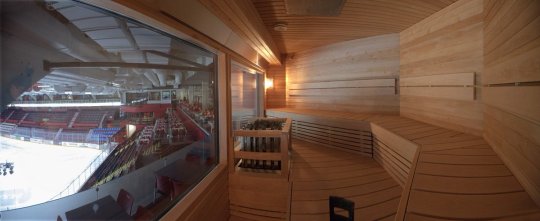
In many hockey arenas around Finland, you can reserve a sauna box to view the game from
Saunas, depending on the stove type (kiuas), are heated with wood or electricity to 80-100°C. The sauna etiquette is quite simple; for the shyest people, a wrapped towel is allowed, but the expectation is that people will be naked. The bench is protected with a sauna cloth, and people shower before going in. The hot steam (löyly) rising from the stove rocks relaxes the body and mind during sauna bathing, and the steam can be considered gentle or harsh. Often Finns discuss different saunas and ask, "Was the löyly any good?" Unfortunately, there is no secret recipe for the perfect steam as it's more of a mindset. Sauna sessions can last for hours, so it’s wise to take a break outside every 10-15 minutes and remember to keep hydrated. A person can sweat up to 0.5 L per sauna session, so carbonated or lightly salted water are good sauna drinks. During summer, people make sauna whisks (vihta/vasta) from birch tree branches, which one can hit themselves with to activate muscles and blood flow, but also give saunas their signature birch smell. Even snacks can be made on the sauna stove by wrapping them in tin foil and enjoying them after the bathing session. Lastly, after the final shower, people report feeling naturally glowing after a sauna, making them feel refreshed (saunanraikas) and cleaner than they would after a regular shower.
Finns often feel that the sauna is a special space, where even spiritual aspects of life can be felt, observed, and discussed. Sauna is also an experience where titles and hierarchies disappear since everyone is in their most natural state — naked. For many decades, business and politics have also taken place in Finnish saunas, a practice known as “sauna diplomacy.” Perhaps the relaxation and intimacy of the sauna force people to be open and honest. Sauna can be a way to spend time with friends, coworkers, close family, or even extended relatives. Simply put, saunas are a long, unique, and extremely important part of Finnish everyday life; a cultural practice that can be hard to comprehend or even explain at times!
For further reading:
Elävä Perintö. 2017. Sauna bathing. https://wiki.aineetonkulttuuriperinto.fi/wiki/Sauna_bathing
UNESCO. 2020. https://youtu.be/qY__OOcv--M
35 notes
·
View notes
Text
I study artificial Pokemon, but did you know there are also artificial moves?
Pokemon naturally learn moves as they gain experience. They can also inherit moves from their parents, or even gain moves during the process of evolution. However, some moves can only be learned by Pokemon with human assistance. These "artificial" moves are often considered in three distinct categories, based on the origin of the move.
Culturally taught moves are moves that are passed down in certain cultures or as part of cultural traditions. Draco Meteor is a very famous example of this. The move has been passed down through generations of Dragon Tamers and the Draconid people. The "ultimate moves" (Frenzy Plant, Blast Burn, and Hydro Cannon), were originally taught by the people of the Sevii islands. Moves that can only be learned by Legendary or Mythical Pokemon, such as Relic Song, are often passed down through generations of families.
Competitively taught moves are moves specifically taught by experts for competitive battling. Moves like Scorching Sands are taught in dojos on the Isle of Armor by masters. In Kanto, expert trainers of Eevee and Pikachu have a few moves they teach as well.
Finally, there are machine taught moves. These are moves engineered for use as Technical Machines, or TMs. Most recently are the TMs engineered at Unova's Blueberry Academy. These include moves like Alluring Voice and Upper Hand. These are similar to competitively taught moves, in that they are often created for the sole purpose of competitive battle. However, they differ in the techniques by which they are taught.
Artificially constructed moves are nothing new. Many cultures have been teaching Pokemon moves that are not naturally learned for generations. However, advancements in TM technology have made engineering moves a much more common practice. Modern artificial moves are more about effectiveness in competition. However, there are still many people and places that teach moves as a part of their heritage. Some techniques and traditions for teaching moves are even considered intangible cultural heritage. While the techniques we use may differ, the goal is almost always the same; to solidify the bond between people and Pokemon.
#pokeblogging#pokemon irl#pkmn irl#ooc: had this idea spinning in my brain and needed somewhere to post it#ooc: i love the idea of ancient traditions of teaching a trainer and their pokemon how to access powerful moves as a symbol of their bond
21 notes
·
View notes
Text



🪡🧵Romanian women have been coding signs for ages. Their threads bind apotropaic symbols into scrolls of fabrics and garments, according to complex systems, which have been developing since the Neolithic ages. In this pocket size comics collection I tried to gather bits of the pixel's long forgotten story. The rough English version of the 36 page publication is available here >>> https://issuu.com/sorivazelina/docs/mostrar2_eng
To flip through the Romanian version please visit the exhibition, at the Peasant Museum in Bucharest, open till the 9th of January 2025. It was built as a reflection on a unique anonymous textile piece, discovered in the archive of the ASTRA Museum in Sibiu. The hyper-sensorial works, leading up to this marvel of over 200 embroidered motifs, belong to artists such as Aurelie Morillas, Marlene Herberth, Marin Raica, Sillyconductor, Anamaria Lungu, Atelier Vrac, all brought together by the Dala Foundation and Ovidiu Daneș, who has been saving the local architectural, intangible and natural heritage, together with his wife Luminița, for more than a decade, also via the CUCA festival.
#comicstrip#comic art#comics#folklore#crafts#romanian#traditional art#romania#embroidery#yves saint laurent#la blouse roumaine#ie#port popular#Lena Constante#Florica Zaharia#Muzeul Țăranului Roman#Romanian Peasant Museum#motifs#textiles#tapestry#patterns#handicraft#publication#zine#folk art#arta populara#pixel#tesaturi#scoarte#public exhibition
45 notes
·
View notes
Text
Together with him, explore the Jingxi Zhuang embroidered silk ball craft, a treasure of China's intangible heritage.
💫Intricate patterns, telling tales of romance and happiness
💫Vibrant hues, each thread a verse in nature's poetry
💫Complex techniques, embodying the depth of time and artistry
💫Versatile uses, from fragrance to enhancing well-being
Credits: Love and deepspace official




40 notes
·
View notes
Text


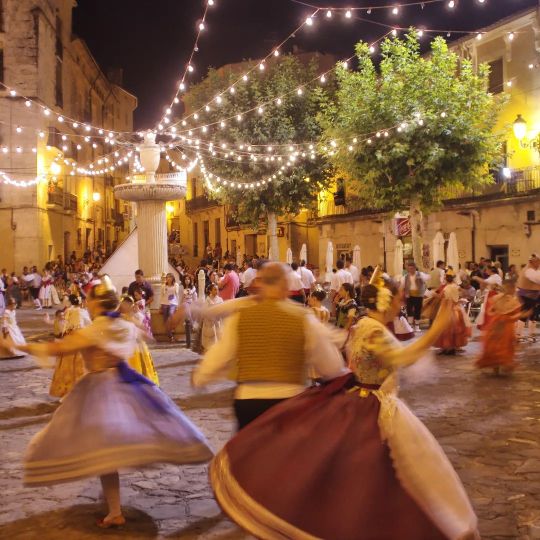



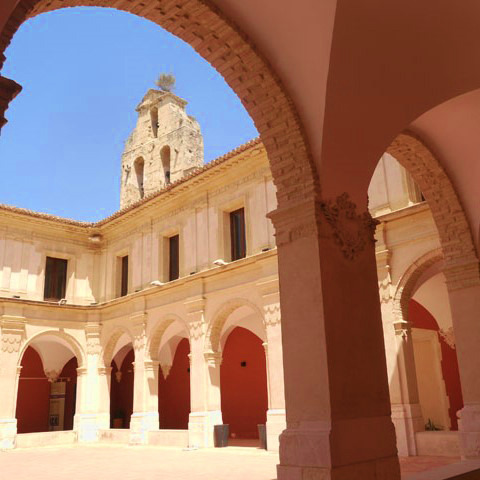


De Salses a Guardamar i de Fraga a l’Alguer: les comarques de parla catalana una a una. 66/88: la Vall d'Albaida (Central Valencian Country).
La Vall d'Albaida (Albaida Valley) is a landlocked shire whose capital city is Ontinyent.
This shire is known for its beautiful nature and historical towns. Surrounded by the Mariola mountain range and crossed by two rivers and many streams, the landscape creates many peaceful corners, and natural swimming pools.
The county also has a number of archaeological sites from many different time periods since Prehistory onwards. Among them, there are the mysterious series of cavities and tunnels excavated in the cliffs, the largest of which is the Covetes dels Moros near Bocairent. Even though it's difficult to know when they were made because no artifacts nor inscriptions have been found in them, studies show that it's most likely that they were made in the 10th or 11th centuries (Islamic period in the Middle Ages) and used as a grain storage. Similar structures exist for this purpose in Northern Africa, so it could have been made by Amazigh people who moved here with the Islamic conquest. Another theory (which is less likely) would link it to the Visigothic (7th-8th centuries) hermit burials nearby and consider that each cave would be a burial for a hermit form this community.
The bell ringers from Albaida have been included in the UNESCO Intangible Cultural Heritage of "Manual Bell Ringing", which recognizes the long history of this knowledge and its importance as a tool of communication, music, and its role in festivities in the Iberian peninsula and Italy. In Albaida, they have been ringing the bells manually every day since the Catalan conquest in the 13th century, and passing down the knowledge from generation to generation ever since.
Photos: manelboc, bambantpercasa, Blai Vanyó/valenciaturisme, Comunitat Valenciana, Turisme Bocairent, Ajuntament de Llutxent, Joanbanjo/wikimedia.
#comarques#vall d'albaida#ontinyent#bocairent#covetes dels moros#arqueologia#història#history#landscape#archaeology#archeology#middle ages#medieval#al andalus#travel#europe#landscape photography#bell ringing#bells
17 notes
·
View notes
Text
Love Game in Eastern Fantasy: Traditional Accessories
So apparently LGIEF based lots of costume designs on Chinese handicrafts and paid homage to intangible cultural heritage according to their Weibo. I'm not even familiar with some of these but as a fan of costume history and meta infopiling I tried my best to look them all up which I will link. All pics are from show's account.

Jinling Knotting: Baidu
Emm I couldn't find any article that specifically referred to Jinling Knotting so I just generally linked the Baidu page about Chinese knotting
Pingyao lacquerware: Baidu


Traditional Chinese Button Knots: Baidu
Ou Embroidery: Baidu
Nanjing Brocade Weaving Technique: Baidu



Miaomiao's Accesories (Made using Miao Ethnicity's Embroidery techniques, heh):


Ep 4: Longevity Lock Amulet
The image says- Intangible cultural heritage, hand embroidered, protects health, front display, back display
Ep 6: Guardian Tiger Amulet
The image says- Hand embroidered, rich in details, protects health, back display, side display
Ep 8: Azure Dragon Bag
The image says- Intangible cultural heritage handicraft, luxurious hand embroidery, protects health, bag display, shoulder display

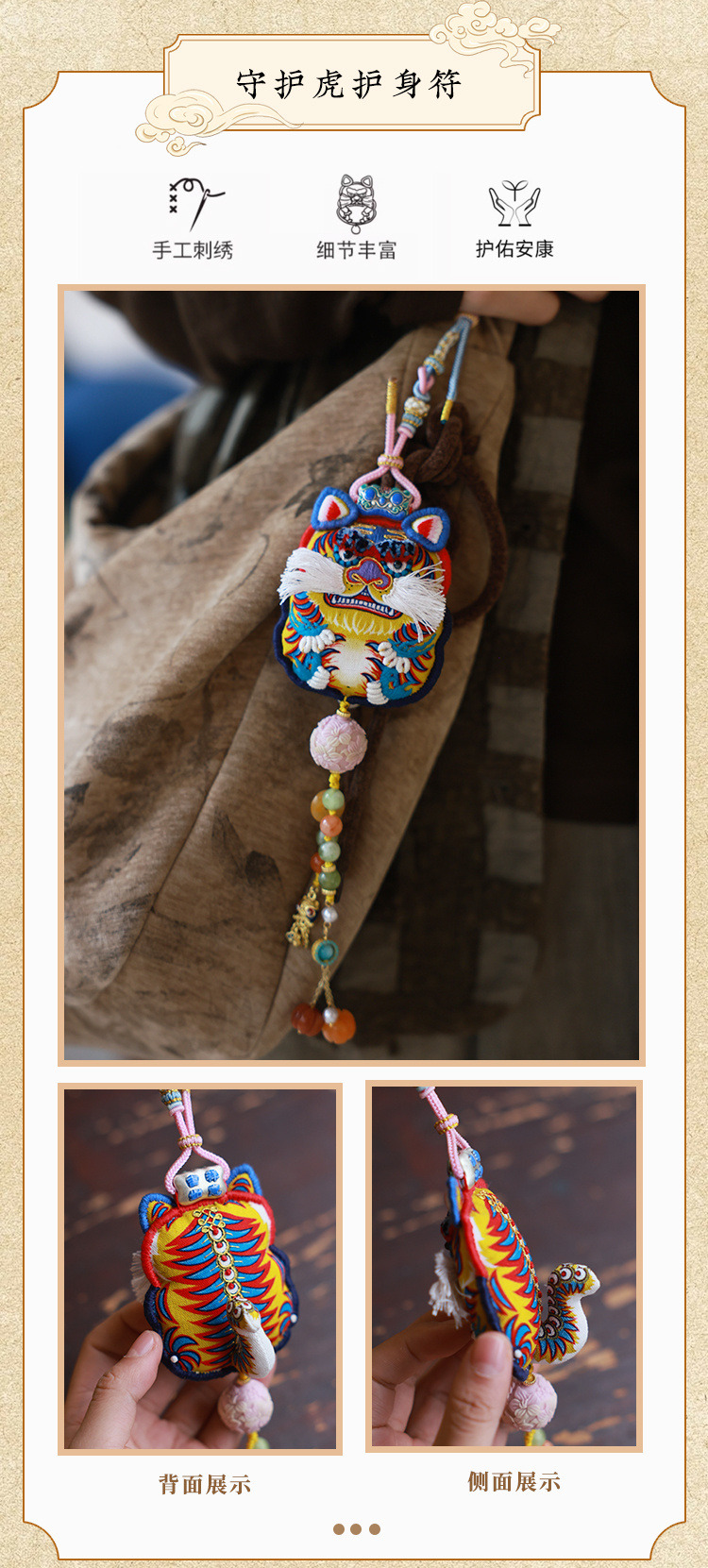
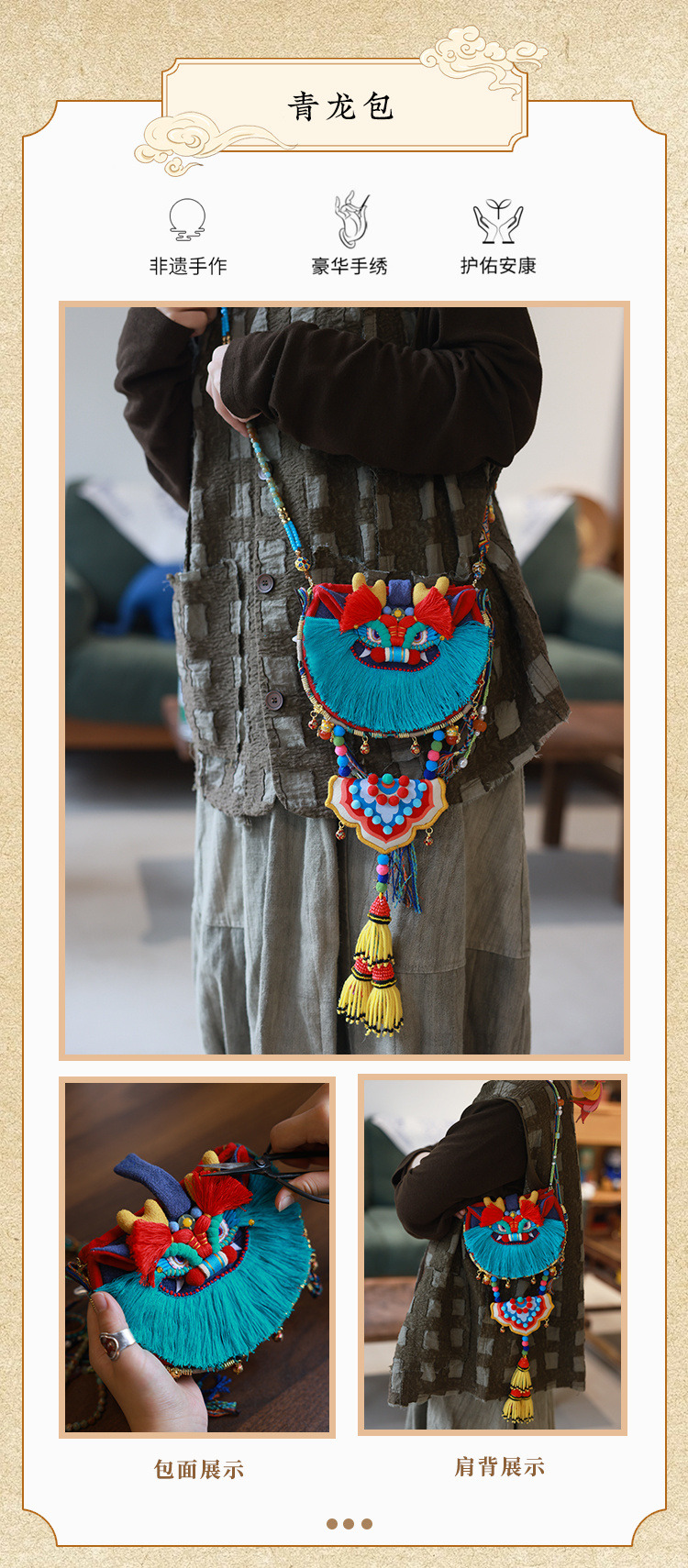
Ep 15: Kite Brooch
The image says- Hand embroidery, rich in details, intangible cultural heritage handicrafts, embroidery display, brooch display
(Whatever ep that aired on 11-8 lol I don't rem): Rabbit Sachet
The image says- Good meaning, dispels cold and warms you up, natural osmanthus, back display, rear display
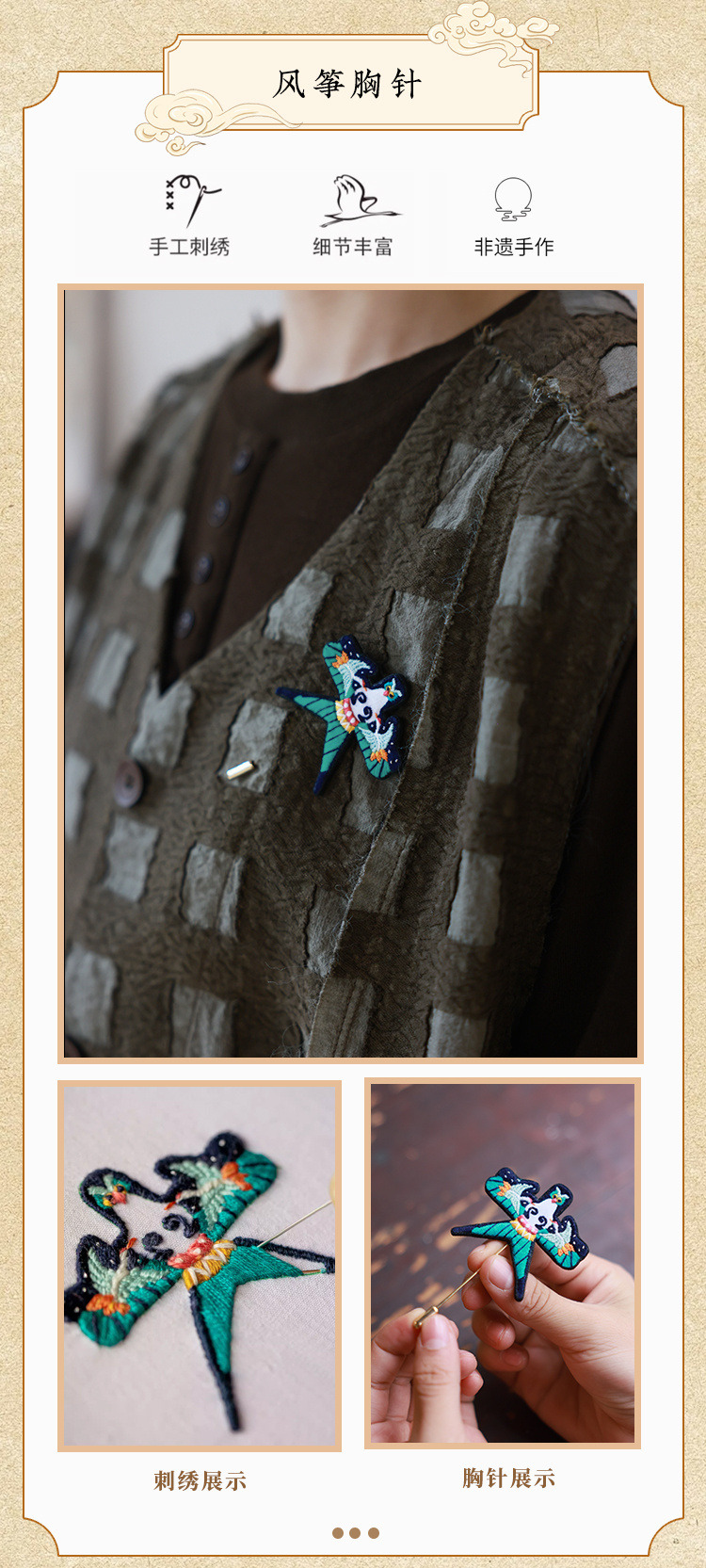

.
More posts by me
#cdrama#chinese drama#love game in eastern fantasy#love game in eastern fantasy accessories#traditional chinese handicrafts#traditional chinese costumes
29 notes
·
View notes
Text
Prompt #4: Interpreting Nature through Art
Who Am I to Interpret Nature Through Art? When I think about interpreting nature through art, what stands out to me is how it’s more about creating a connection than creating something physical. It’s an experience, a way of noticing and sharing the beauty and meaning in the world around us. Whether it’s through storytelling, reflection, or simply pausing to appreciate a moment, nature interpretation feels like an art form in how it brings people closer to the natural world and helps them see it in a new light.
Nature Interpretation: The Intangible Art
As mentioned in Chapter 3, interpretation isn’t just about providing information, it’s about meeting ones needs on different levels, from knowledge and understanding to aesthetic and even self-actualization. Interpreters help people form deeper connections with nature, making it something they not only see but truly experience. It helps us connect with it in a way that feels personal. It makes us slow down and see nature instead of just passing by it. Just like an artist uses color or composition, an interpreter uses storytelling, emotion, and perspective to shape how others see the natural world. It's fascinating to me how the variable of time is always part of that meaning. It's not just a backdrop but an active force that sculpts and transforms nature’s beauty. Whether it’s the erosion of mountains or the changing seasons, nature is constantly in motion, making every moment unique. Throughout this unit, we’ve read about how interpretation balances emotion and intellect. That balance is an art form in itself. Nature isn’t just about science, it’s also about how it makes us feel. The way trees sway, the sound of water moving, or a bird taking flight all have something to say. Interpreting nature is simply about being present and helping others see what’s already there.
That is exactly what I like most about it, there is no right or wrong answer to how one is able to view something

I've taken this picture of a starry sky, but through the art of interpretation, it becomes a map of constellations, stories, and connections that have guided humanity for centuries!
My personal Interpretation I interpret “the gift of beauty” as the ability to recognize and appreciate the details, emotions, and experiences that make something meaningful. Beauty isn’t just about appearance; it’s about the feeling a moment evokes. If I’m getting off my bus and it’s snowing, I find myself appreciating how pretty it looks, even if I wasn’t expecting to. It’s a reminder to slow down, see beyond the surface, and find value in the world around us. In nature, beauty is often fleeting, shaped by time and change, making it even more precious. It’s easy to overlook the fact that today’s fresh snow will be slush tomorrow or that the vibrant red autumn trees will be bare in just a week. The gift of beauty isn’t just in witnessing it but in sharing it, whether through words, art, or simply pointing out something others might not have noticed.

Here’s a White Admiral butterfly I would’ve missed if I hadn’t been appreciating the "gift of beauty", it flew away the very next minute!
How do you personally connect with the art of nature interpretation? I would love to know how your ideas compare and contrast with mine.
Reference:
Beck, L., Cable, T. T., & Knudson, D. M. (2018). Interpreting cultural and natural heritage: For a better world (Revised ed.). Urbana, IL: Sagamore-Venture.
14 notes
·
View notes
Text
My next post in support of Ukraine is:
Next site, Petrykivka (Петриківський) painting. It is a traditional Ukrainian painting style that uses natural plant-based paints. It originated in the village of Petrykivka, Dnipropetrovsk Oblast, and the earliest examples date from the 18th century. It was recognized by the Ministry of Culture of Ukraine in 2012 as an intangible cultural heritage of Ukraine & was also included in UNESCO's Representative List of Intangible Cultural Heritage of Humanity in 2013. Here's an article all about the art form.
#StandWithUkraine
#СлаваУкраїні 🇺🇦🌻
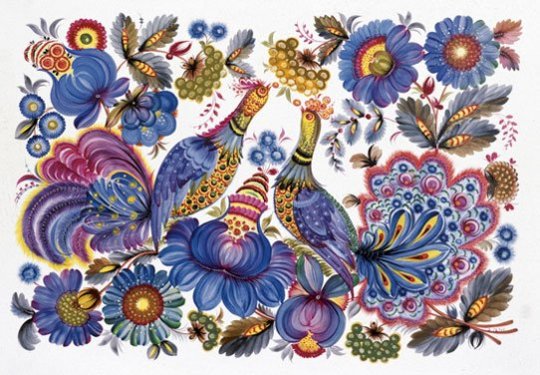
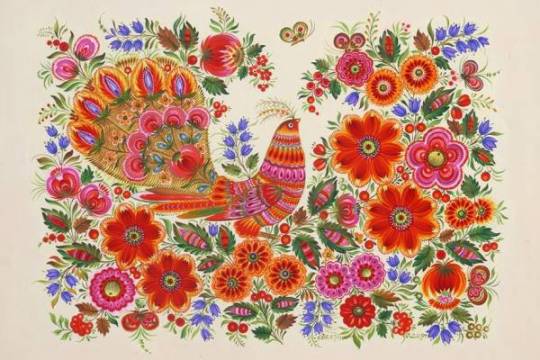
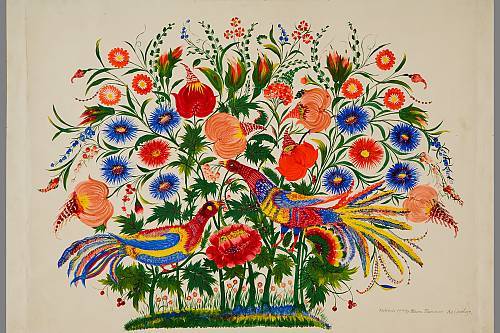
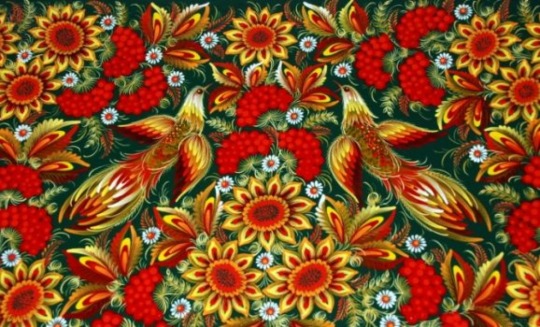
14 notes
·
View notes
Text




Love and Deepspace × Embroidered Silk Ball
Generations of refined craftsmanship, a legacy enduring Together with him, explore the Jingxi Zhuang embroidered silk ball craft, a treasure of China's intangible heritage.
💫Intricate patterns, telling tales of romance and happiness 💫Vibrant hues, each thread a verse in nature's poetry 💫Complex techniques, embodying the depth of time and artistry 💫Versatile uses, from fragrance to enhancing well-being
Special Acknowledgement to Department of Culture, Radio, Television, Sports and Tourism of Baise Department of Culture, Sports, Radio, Television and Tourism of Jingxi
#love and deepspace#lads#lnds#l&ds#;collaborations#sweetie silk#embroidered silk ball#chibi rafayel#chibi zayne#chibi xavier#chibi sylus#lads chibis#rafayel#zayne#xavier#sylus
39 notes
·
View notes
Text


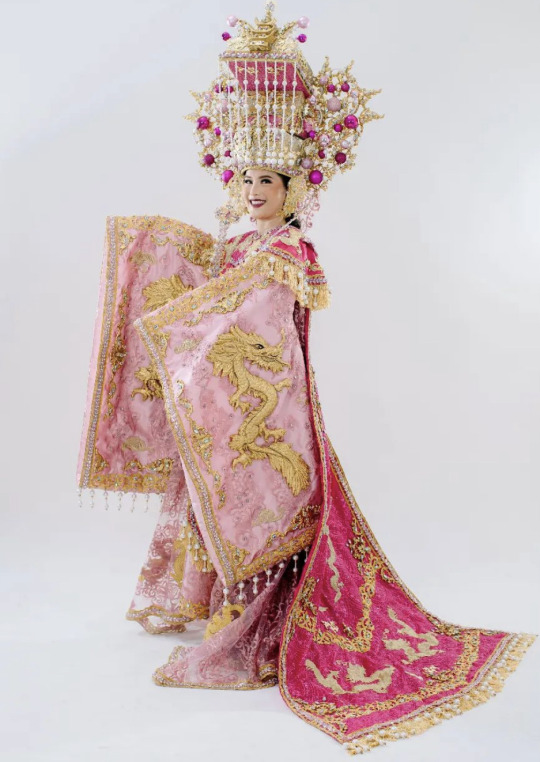
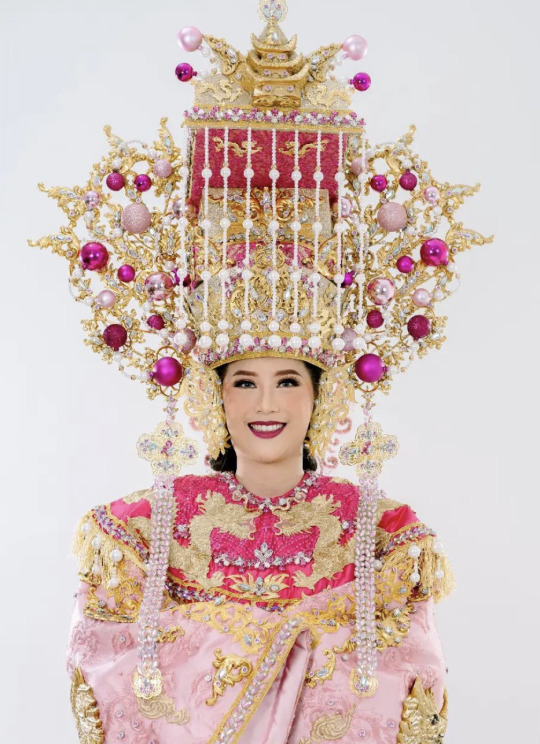

Miss International Taiwan 2023 National Costume
"MAZU: THE GODDESS OF THE SEA" Mazu's name is comprised of the characters ma, meaning "MOTHER" and zù which means "ANCESTOR." She has a few other formal titles, like Linghui Fürén , meaning "Lady of Light and kindness" or Tiânhòu which means "Empress of Heaven".Mazu has been a very popular religious figure since the immigration period of Taiwan. Mazu is often depicted wearing bright robes laced with shining jewels that help her be more easily seen by travelers at sea. Mazu wears an imperial headdress that represents her godly nature. Mazu was blessed with supernatural abilities and could accurately forecast the weather and predict the future. Before typhoons, sailors would claim to see the bright robes of Mazu on the water signaling the arrival of the impending storm. Mazu is said to appear as pure beam of light to sailors in need. Taiwan's "Dajia Mazu pilgrimage" is the biggest religious parade in the world that's for a female deity, attraction 3 million participants last year. In 2009, UNESCO added Mazu Belief and Culture to its Representative List of the Intangible Cultural Heritage of Humanity.
77 notes
·
View notes
Text
ULAANBAATAR – During the 19th session of the Intergovernmental Committee for the Safeguarding of the Intangible Cultural Heritage, held in Paraguay, the “Mongolian Nomadic Practices” were officially inscribed on UNESCO’s Representative List of the Intangible Cultural Heritage of Humanity.
This marks the 16th element from Mongolia to be included in UNESCO’s Intangible Cultural Heritage list.
The “Mongolian Nomadic Practices” encompass a comprehensive system of traditional knowledge and rituals, including selecting suitable pastures, choosing auspicious dates for migration, preparing and loading livestock for travel, cleaning campsites, performing rituals to honor new settlements, and managing herds in harmony with the capacity of pastures, the structure and size of livestock, and the distribution of wildlife and plants. These practices also emphasize sustainable use of natural resources and the protection of the environment.
Research and studies were conducted to support the nomination of this heritage element for inscription on UNESCO’s list.
UNESCO experts visited Mongolia to study its nomadic cultural heritage, and with the participation and support of scholars, researchers, and thousands of herders, the value and significance of these practices were recognized and officially inscribed, according to the Ministry of Culture, Sports, Tourism, and Youth.
5 notes
·
View notes
Text
Devil May Cry OC Profile

(provided by picrew; art belongs to the artist)
Mordecai Wixton
Basics
Full Name: Mordecai Lukas Wixton
Nicknames: Cai (Wendy), Mordi (Wendy and Dante), Moody Mordi (Dante), Shorty Mordi (Dante), The Last Wixton
Aliases: Denise Van der Berg (glamoured)
Species: Witch
Gender: Male/Intersex
Sexuality: Demiromantic/Panromantic/Demisexual
Age: Same age as Dante (1 month apart)
Birthdate: September 17th (Virgo ♍)
Alignment: Neutral Good
Affiliation: Wixton Family, Devil May Cry
Occupation: Thief, Fashion Designer, Demon Hunter
Characteristics
Appearance
Height: 5’8” (173 cm)
Weight: 165 lbs (74.8 kg)
Skin Tone: Alabaster/Pale
Hair Color: Whitish-Blue/Pastel Blue
Eye Color: Gray
Attire: Black button-up shirt, Long black trench coat, black ripped pants with buckles and silver chains, boots
Features: Scar on the side of his right cheek, two moles on his left cheek and close to his eye (Wixton marking), choker with a blue jewel (Wixton Family heirloom), long eyelashes
Personality
Mordecai often carries an air of gloominess, with a straightforward, no-nonsense, and serious demeanor that makes him stand out. His blunt honesty can be disarming; he speaks with a brutal and stoic frankness that leaves little room for pretense. Most of the time, his expression is flat, giving him a perpetually bored or tired look. However, he does have a sharp wit—he can be delightfully sarcastic and sassy when the mood strikes him, not hesitating to put someone in their place or brush aside their words with a casual indifference.
Despite his tough, cold, and stoic exterior, Mordecai presents himself as jaded and reclusive, yet emotionally vulnerable at times, revealing layers of pain beneath his tough exterior. The massacre of his entire family left him scarred with deep-seated trauma, instilling in him a lingering fear of losing anyone he cares about. This tragic event has also fostered a profound distrust and disdain for demon hunters, whom he blames for the chaos that shattered his life. As a result, he has retreated into a solitary existence, often seen as a lone wolf, shunning emotional connections and shutting others out in a bid to protect himself from further heartbreak.
Although considered a tough guy, Mordecai is secretly a compassionate young man. His actions reveal a caring nature, particularly toward his adoptive younger sister, Wendy, and his partner Dante, for whom he feels a strong protective instinct. While he may scoff at the idea of being caring or protective, his deeds often speak louder than his words, demonstrating a loyalty to those close to him that he struggles to acknowledge. Over time, he opens up and becomes more trusting of his partners, whom he secretly considers friends.
Powers & Abilities
Powers
Dark Arts: Mordecai’s main power is through the dark arts of witchcraft. Since he was born of Wixton heritage, he was taught the power of shadows and darkness.
Umbrakinesis: Mordecai can generate, control, and manipulate shadows and darkness in different shapes and sizes, which he mostly uses tentacles or spikes.
Shadow Mimicry: Mordecai can become a shadow himself by mimicking other people’s shadows and hiding within them.
Umbragreous Teleportation: Mordecai can use shadows to teleport himself or other people to other places.
Intangibility: Mordecai can “phase” or pass through solid objects whenever he is near a shadow
Witchcraft
Conjuration: Mordecai can invoke dark, vengeful, malevolent, or peaceful spirits or creatures by using incantations to summon them to help him in battles.
Blood Magic: Mordecai can use his blood as a weapon to increase his shadow manipulation, spirit conjuration, or cast alchemic reactions
Rune Magic: Mordecai summons runes with his magic that can create energy blasts, trap people in the rune, or keep other witches from using magic
Force Field Projectiles: Mordecai summons force fields to block out oncoming attacks
Pyrokinesis: Mordecai can generate, control, and manipulate purple fire from either his magic or a heat setting
Glamour: Mordecai can change and alter his appearance or create real-life-like illusions. His most common use of this power is that he changes his appearance into a female version of himself or into other people, casts illusions on other people, or turns objects into other objects.
Levitation: Mordecai can make himself and objects float, which includes that he can fly.
Telepathy: Mordecai can communicate with other people of animals with his mind.
Accelerated Healing Factor: Mordecai can rapidly heal from any injury in the blink of an eye. With his magic, he can also heal other people's injuries
Abilities
Hand-to-Hand Combat
Enhanced Athletism
Aerobatic Combat
Multilingual
Weaknessess
Spell Instability: Mordecai can’t control the power of strong spells as well as it makes him unstable, and he could lose control if it’s not practiced well enough.
Defective Glamours: Mordecai's glamours come with a crucial requirement: he must first visualize the person or object he wishes to transform. Without a reference, the glamour can deviate from its intended appearance, resulting in a surreal distortion that is often grotesque and far from what was envisioned. The outcome can be as unpredictable as it is unsettling, leading to bizarre manifestations that stray into the realm of the absurd.
Low Blood Iron: Mordecai can’t overuse or rely on his blood magic too much, due to having low iron in his blood cells, and he could pass out or get sick from blood loss, which is why he keeps potions on him at all times when he uses his blood magic.
Slow Regenerative Healing: Even though Mordecai can rapidly heal, his regeneration can slow down if he injures himself too much.
Trauma: Mordecai still bears some trauma from his childhood after the massacre of his family, along with the abusive relationship he suffered from, so he tends to shut out
Equipment
Daggers
Potions
Poisions
Relationships
Parents
Zephyros Wixton (father🕇)
Destalia Herios-Wixton (mother🕇)
Relatives
Great great great grandfather🕇
Great great-grandmother🕇
Maternal great-aunts🕇
Great uncles🕇
Cousins🕇
Siblings
Denise Wixton (older sister🕇)
Jasper Wixton (older sibling🕇)
Julius Wixton (younger brother🕇)
Romantic
Dante (boyfriend)
Rylan Saldivar (ex-boyfriend)
Sagus Turner (ex-boyfriend)
Friends
Esper Lockhart (best friend)
Wendy
Trish
Nero
Kyrie
Lady
Allies
Prim Belestros (mentor)
Rivals
Vergil
Enemies
Others
Quotes
“I don’t take sides or do partners.”
"I only hurt women when they're not being polite to me, so don't give me that crap."
"While Wendy is a brat, seeing her happy and having a childhood doesn't hurt."
“Now you’re ripping men’s shirts off. Don’t you have any shame or are you just a slut?” (Netflix Mordecai)
Trivia
His facial features and androgyny make people often mistake him for a girl
He loves to play violin and piano in his free time
Mordecai’s family line can be traced back to the 15th century's Wallachia and the Viking Ages, so he’s of Romanian and Scandinavian descent
He named his female glamour after his sister
Voice Actors
Japanese: Tomokazu Sugita
English: Matthew Mercer
#devil may cry oc#devil may cry#male oc#male original character#picrew#demisexual#demiromantic#pansexual character#intersex#oc profile#dante x oc#dante x male oc#oc x canon#first post#I don't know why I'm doing this#i don't give a fuck#i don't care
3 notes
·
View notes
Text
Did some Pathfinder builds for Remedy characters, which I've done before, but there's been a PF2e remaster and I wanted to do it for Saga too, so.... Saga as a psychic, Alan as an oracle, and Jesse as a summoner, up to level 5.
Saga Anderson, Psychic 5
Ancestry: Human, Heritage: Aphorite Aphorites were first forged by axiomites, the primary inhabitants of the Eternal City of Axis, the plane of pure law. The original aphorites served as liaisons between their lawful progenitors and frustratingly unpredictable mortal allies. Marrying the logical thought processes of conformity to law and the gift of self-determination, early aphorites spread across the Material Plane to serve as Axis's proxies and enact its will. Over time, their appearances and personalities grew to resemble their mortal comrades as they were increasingly born among mortals. Aphorites still exhibit Axis's touch in their metallic skin coated in crystalline dust, aptitude for logic, strength in artisanship, and propensity for order and cooperation. But despite these links to their purpose-built origins, contemporary aphorites are undoubtedly their own masters. Background: Detective You solved crimes as a police inspector or took jobs for wealthy clients as a private investigator. You might have become an adventurer as part of your next big mystery, but likely it was due to the consequences or aftermath of a prior case.
Attributes: Strength +1, Dexterity +2, Constitution +1, Intelligence +3, Wisdom +2, Charisma +4 Perception: +9; Low-Light Vision, Darkvision Skills: Acrobatics +9, Athletics +8, Deception +11, Diplomacy +11, Intimidation +11, Lore: Underworld +12, Medicine +9, Nature +9, Occultism +10, Society +10, Survival +9
AC: 19 (Unarmored); Fortitude: +8, Reflex: +11, Will: +11 HP: 43; Resistances: Mental 2 Speed: 25 ft. Ranged Weapon: Jezail, Air Repeater, Crossbow
Class: Psychic The mind can perceive truths hidden to fine-tuned instruments, house more secrets than any tome, and move objects and hearts more deftly than any lever. By delving into both the conscious and subconscious aspects of your inner self, you have awoken to the might of psychic magic, allowing you to cast spells not through incantations or gestures but by the power of your will alone. While the thin line between your mind and reality means that a single errant thought could have unintended consequences for yourself and your companions, you know that anything is possible, if you can imagine it. Conscious Mind: The Infinite Eye Conscious Mind Spells: Sure Strike, Augury, Organsight Psi Cantrips: Detect Magic, Guidance, Glimpse Weakness The true strength of the mind lies in the knowledge it contains, with each new observation contributing to the totality of its experiences. To grow your experiences—and with them, your power—you devote yourself to observing as much as possible, casting your senses through space and time with clairvoyance and precognition. Subconscious Mind: Emotional Acceptance Psyche Actions: Restore The Mind The mind's truths come not in learned words or mathematical formulas but in deeper feelings and sensations. Emotions unlock the door to your power—you might consider your heart the source of your strength, or you might find that the infinite complexity felt in a moment expresses your power more efficiently than any string of mystic words ever could. Your thought components are emotions. You might summon the sense of freedom to buoy you through the air or let fear grip your heart even as you plant it in another's mind. Emotion components tend to impart abstract or vivid effects to your visual and auditory spell manifestations as well as more intangible flashes of emotion, such as swirls of joyous color or a sense of growing melancholy.
Other Psychic Features Clarity of Focus, Precognitive Reflexes, Signature Spells, Unleash Psyche, Counter Thought, Mental Buffer
Occult Spells 3rd: Hypercognition 2nd: Clear Mind, Umbral Mindtheft 1st: Object Reading, Runic Weapon Cantrips: Infectious Enthusiasm, Read The Air, Wash Your Luck
Aphorite Feats: Lemma of Vision, Internal Cohesion General Feats: Weapon Proficiency Skill Feats: Cognitive Crossover, Eyes of the City, Streetwise
---
Alan Wake, Oracle 5
Ancestry: Human, Heritage: Versatile Background: Artist Your art is your greatest passion, whatever form it takes. Adventuring might help you find inspiration, or simply be a way to survive until you become a world-famous artist.
Attributes: Strength +1, Dexterity +1, Constitution +2, Intelligence +3, Wisdom +2, Charisma +4 Perception: +9; Low-Light Vision Skills: Acrobatics +1, Arcana +10, Athletics +1, Crafting +12, Intimidation +11, Lore: Art +10, Nature +9, Occultism +12, Religion +9, Society +10, Stealth +8, Survival +9
AC: 18 (Unarmored); Fortitude: +9, Reflex: +8, Will: +11 HP: 58; Resistances: Physical 4 Speed: 25 ft. Ranged Weapon: Dragon Mouth Pistol, Double-Barreled Musket Melee Weapon: Stiletto Pen
Class: Oracle Your conduit to divine power eschews the traditional channels of prayer and servitude—you instead glean divine truths that extend beyond any single deity. You understand the great mysteries of the universe embodied in overarching concepts that transcend good and evil or chaos and law, whether because you perceive the common ground across multiple deities or circumvent their power entirely. You explore one of these mysteries and draw upon its power to cast miraculous spells, but that power comes with a terrible price: a curse that grows stronger the more you draw upon it. Your abilities are a double-edged sword, which you might uphold as an instrument of the divine or view as a curse from the gods. Mystery: Cosmos Celestial bodies great and small exert influence on you, giving you sublime cosmic power. Perhaps you see the glittering stars as a divine blessing, or perhaps you feel drawn to the infinitely dark spaces between. You might uphold deities like Desna, Sarenrae, or the deific lovers Shizuru and Tsukiyo who represent the sun and the moon—or you might draw power from dark entities from beyond the stars, like certain Outer Gods, or destructive gods of the night like Zon-Kuthon or the rat goddess Lao Shu Po. Mystery Benefit: Your body is as much an astronomical one as it is physical. You gain resistance equal to 2 + half your level against all physical damage. Mystery Cantrip: Dancing Lights; Revelation Spell: Spray of Stars Mystery Domain: Darkness; Domain Spell: Cloak of Shadow
Oracular Curse: Curse of the Sky's Call You have your head in the clouds—and not just figuratively. Your body is drawn toward the heavens, making you lighter and less substantial than you should be. Your eyes glow with starry light, and your hair and clothing float and drift around you. Minor Curse: Your unnatural lightness makes it hard to keep your footing and interact with other physical objects. You are enfeebled 1 and take a –2 penalty to saves and DCs against Grapple, Shove, and other forms of forced movement. Moderate Curse: Your body is drawn further skyward. You are enfeebled 2, and the penalty from your minor curse increases to –3. You are treated as one size smaller for wind effects. You gain a +2 status bonus against Trip attempts, you only take half as much damage from falls, and you gain the effects of the Powerful Leap and Quick Jump skill feats. You weigh only half as much, and your Bulk, should someone need to carry you, is also half as much. Major Curse: As your body rises, you float just above the ground beneath you. You become enfeebled 4, and the penalty from your minor curse increases to –4. You can walk on liquids as if they were solid; you gain the effects of the Cloud Jump skill feat; and you don't leave tracks, trigger weight-sensitive pressure plates, or otherwise connect with the ground below you.
Other Oracle Features Domain Acumen (Additional Domain: Moon, Domain Spell: Moonbeam), Glean Lore, Revelation Spells, Signature Spells
Divine Spells 3rd: Holy Light, Scrying Ripples 2nd: Radiant Field, Fear the Sun 1st: Breadcrumbs, Command, Bane Cantrips: Illuminate, Light, Message, Void Warp, Divine Lance
Human Feats: Gloomseer, Haughty Obstinacy General Feats: Fast Recovery, Weapon Proficiency Skill Feats: Arcane Sense, Magical Crafting, Specialty Crafting
---
Jesse Faden, Summoner 5
Ancestry: Human, Heritage: Versatile Background: Otherworldly Mission You're called to serve a specific purpose—your deity told you so, and so it must be true. Maybe you grew up knowing all along, or maybe it came to you one day in a vision, clear as a bell and twice as loud. You have some task that only you can accomplish. You mission might be as dangerous as killing a deadly tyrant or as simple as opening a particular door on a particular day. Once per adventure, you can ask the voice you believe to be a deity for orders and get some kind of instruction—you never get any kind of explanation, simply a command to go somewhere or do something. Following those commands isn't always safe, but it's usually interesting.
Attributes: Strength +1, Dexterity +3, Constitution +1, Intelligence +2, Wisdom +2, Charisma +4 Perception: +11 (+2 initiative) Skills: Acrobatics +10, Arcana +9, Athletics +8, Crafting +9, Intimidation +11, Occultism +11, Religion +9, Society +9, Stealth +10, Survival +9
AC: 20 (Unarmored); Fortitude: +10, Reflex: +10, Will: +11 HP: 63; Speed: 30 ft. Ranged Weapon: Pepperbox
Class: Summoner You can magically beckon a powerful being called an eidolon to your side, serving as the mortal conduit that anchors it to the world. Whether your eidolon is a friend, a servant, or even a personal god, your connection to it marks you as extraordinary, shaping the course of your life dramatically. Focus Spells: Boost Eidolon, Evolution Surge Eidolon Type: Construct; Tradition: Arcane, Home Plane: Astral Plane Evolution Feat: Energy Heart; Energy Type: Sonic Your eidolon is a mental construct based on an astral thoughtform and given physical presence and life by its connection to you, its shape limited only by your imagination. Your eidolon's appearance and physical form vary based on your shared vision for its construction, from clockworks to stuffed dolls and everything between, and it's not uncommon for that appearance to change greatly as your construct gains evolutions. Because it arises from an astral entity, your construct is no mindless servitor, but a fully thinking being with its own ideas, goals, and even emotions. These entities are extremely diverse; while many construct eidolons come from a powerful symbiotic connection with astral denizens, just as many arise from the forgotten memories of ancient empires and craftworks drifting across the Silver Sea of the Astral Plane.
Other Summoner Features Act Together, Link Spells, Manifest Eidolon, Share Senses, Shared Vigilance, Unlimited Signature Spells, Meld Into Eidolon, Defend Summoner
Arcane Spells 3rd: Levitate, Haste 2nd: Telekinetic Maneuver, Dancing Shield, Fleet Step (Heightened +1) Cantrips: Telekinetic Projectile, Phase Bolt, Read Aura, Warp Step, Telekinetic Hand
Human Feats: Clever Improviser, General Training General Feats: Fleet, Incredible Initiative, Untrained Improvisation, Weapon Proficiency Skill Feats: Skill Training (Athletics), Streetwise
---
I didn't do archetypes or multiclasses to keep it simple, but in the absence of 2e mythic adventures and origins (though they will be arriving soon), and since these babies are Very Special, I'd probably use it as a limited secondary leveling-up system with a bit more power (instead of archetype feats replacing class feats or alternating classes one level at at time).
Example:
If I did a multiclass for Saga, it would be Interrogation Investigator, and probably the Psychic Duelist archetype. Also, godlings are from 1e, but if the shoe fits....
If I did a multiclass for Alan, it would be Enigma Bard (less "people person" charisma and more "force of personality" charisma), and maybe with the Shadowdancer archetype as well (less "you choose the shadows" and more "the shadows choose you"). Or maybe even the Curse Maelstrom archetype...
If I did a multiclass for Jesse, it would be Spellshot Gunslinger, and then the Pactbinder or Living Vessel archetype (or both!) for sure.
Also: I need to finish QB for real before I do Jack, but I think he'd be another Oracle, for the Time Mystery, and Chronoskimmer or Time Mage for an archetype. Which means it's Oops All Charisma Classes so far.
#pathfinder#alan wake 2#control game#alan wake#saga anderson#jesse faden#remedy posting#i've had an awful few days so. this is what happens#*posts
23 notes
·
View notes
Text
Blog 4
Who Are You to Interpret Nature Through Art?
As an artist, writer, or even a casual observer, one may wonder: Who am I to interpret nature through art? What gives me the authority or insight to translate the beauty of the world into something tangible? These are questions deeply rooted in the core of interpretation; a concept explored in Chapter 5 of our textbook. Interpretation, as described by Enos Mills and Freeman Tilden, is not about dictating meaning but rather about facilitating connections between tangible experiences and intangible emotions or knowledge (Beck, Cable, & Knudson, 2018). Art, in many ways, serves as an extension of this principle it is a medium through which we translate nature’s grandeur into something deeply personal and universally resonant.
The act of interpreting nature through art is not about authority; rather, it is about perspective and communication. Everyone brings their own lived experiences, cultural backgrounds, and emotional responses to the table. As interpreters, whether through paintings, poetry, music, or sculpture, we strive to capture not just the physical essence of nature but also the emotions and ideas it evokes. According to the interpretive principles outlined in Chapter 5, quality interpretation emphasizes the special character of a place, creating a bridge between tangible elements such as landscapes, wildlife, and weather patterns and the intangible feelings of wonder, nostalgia, and reverence they inspire (Beck, Cable, & Knudson, 2018).
When we attempt to capture the spirit of a place through artistic expression, we are participating in an ancient and ongoing dialogue with nature. This dialogue does not require credentials; it requires passion, attentiveness, and a willingness to engage deeply. Whether you are a seasoned artist or someone sketching in a notebook for the first time, your interpretation is valid because it is uniquely yours. By engaging in this process, you are fulfilling the role of an interpreter helping others to see, appreciate, and connect with the world in new ways (Beck, Cable, & Knudson, 2018).
Interpreting “The Gift of Beauty”
Nature’s beauty is a gift, but what does that really mean? Is beauty simply an aesthetic experience, or does it carry deeper significance? According to interpretive principles, beauty is not just in the eye of the beholder it is in the interaction between the viewer and the viewed, between perception and meaning (Beck, Cable, & Knudson, 2018). The “gift of beauty” is not merely about what we see but about how we feel and what we take away from the experience.
Artists and interpreters alike strive to capture this fleeting, often indescribable essence. Sunrise over the ocean, the intricate patterns of a leaf, or the haunting stillness of a winter forest are not just images but experiences that stir something within us. Freeman Tilden argued that interpretation should be provocative rather than instructive, meaning that the role of an interpreter is to inspire curiosity and emotion rather than simply convey facts (Beck, Cable, & Knudson, 2018). Likewise, artists aim not just to depict nature but to evoke a sense of awe, reflection, and personal meaning in their audience.
Ultimately, interpreting nature through art is an act of gratitude. By capturing and sharing the beauty of the natural world, we encourage others to see it with fresh eyes, fostering respect and love for the environment. In doing so, we uphold the interpretive principles of making connections, deepening understanding, and inspiring a sense of responsibility toward the planet. The “gift of beauty” is not just something we receive it is something we pass on, through our art, our words, and our appreciation of the world around us (Beck, Cable, & Knudson, 2018). How do you interpret the beauty of nature in your own unique way?
Beck, L., Cable, T. T., & Knudson, D. M. (2018). Interpreting cultural and natural heritage: For A Better World. SAGAMORE Publishing, Sagamore Venture.
5 notes
·
View notes
Text
The Beauty of Nature (Unit 4)
Who am I to interpret nature through art? Well, I am a human.
People are all about connection - every individual human has an innate yearning to connect to others. In my opinion, interpreting nature through art is simply another bid for connection. We have an innate desire to share our interpretation with others in a way that they will connect with and understand.
Ham (2013) speaks to this phenomenon and describes nature interpretation as using ‘the tangible elements of the place to advance intangible meanings associated with them’.
Larsen (2003) expands on this idea to say that many of the intangible meanings we associate with a place involve universal concepts such as suffering, triumph, love, and generosity - emotions and experiences that everyone understands.
This makes art an excellent medium through which one can share their interpretation of tangible aspects of nature as it relates to intangible but universal concepts like emotion. Jay Griffith captured this idea perfectly when he said ‘The greatest artists… make [their best works] right inside us, within the heart of the reader or audience’ (Beck et al, 2019). Art is inherently a bid for emotional connection, a hand extended from the artist to the audience that urges all to join them in an emotional experience.
So, who am I to interpret nature through art? I am someone who yearns for connection. I am someone who, when I see something breathtaking in nature, wants to share that sense of beauty with others. Nature is beautiful in that it is awe-inspiring - it inspires art. Nature evokes within us emotions worth sharing, emotions worth immortalizing through art. That is the beauty of nature - it inspires us. The tangible - a quiet forest, a bird flying above a mountain, or a cold blizzard - inspires the intangible - wonder, fear, love, and excitement.

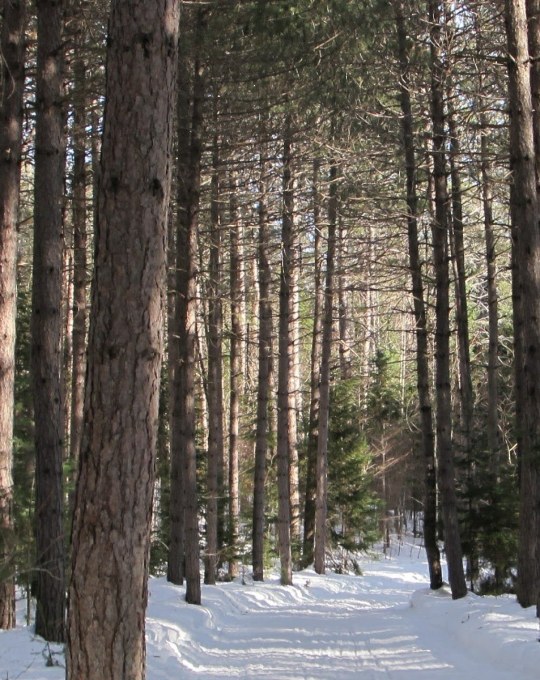

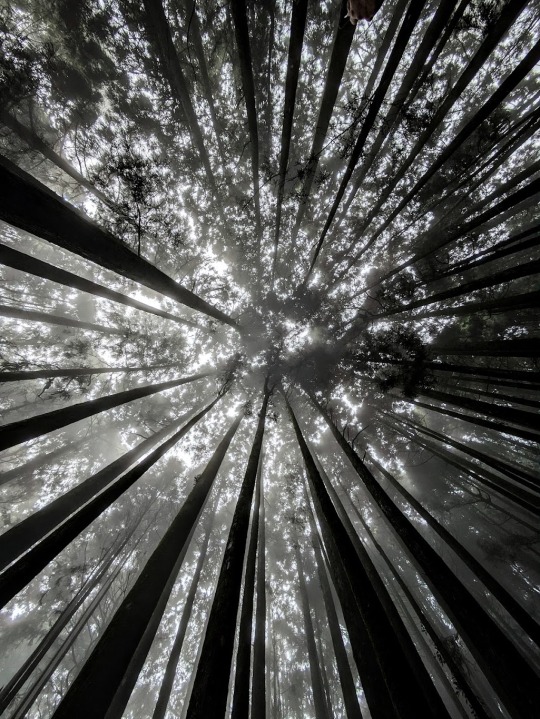
(All these photos could be described as 'a picture of a forest', yet when you look at them individually, they each convey something different, right? Bonus: guess which one was taken outside of Ontario)
As someone blessed to have had many opportunities to find and admire beauty in the natural world, I feel it is almost my duty to share my experiences with others and try to convey my emotions inspired by nature. I do this on my other blog, https://srye.home.blog/. There I can interact with people who leave comments and learn about the experiences of others in nature as well. Though writing is not a physical art, I often share photos and videos from my adventures. I try to consider what blog readers would want to see when I decide what to put on the blog.
What inspires you to share your interpretation of nature through art? Do you find that specific ecosystems, elements, organisms, or landscapes speak to you more than others? Why do you think that is? I find that marine ecosystems and mountains evoke the strongest sense of wonder and exhilaration in me, perhaps because, living in Ontario, I don’t get to see those scenes as often. The lakes, forests, and rivers of Ontario evoke strong feelings of contentment and serenity within me, perhaps because they feel like home.
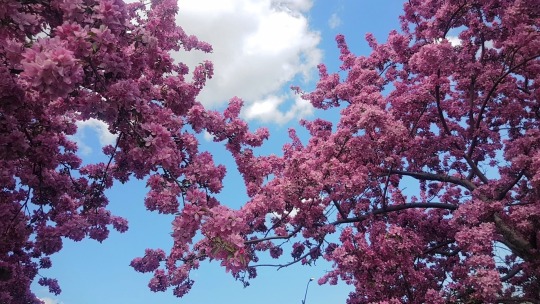

The first picture is of cherry blossom trees near my house in Mississauga. The second picture is at Centennial Park in Etobicoke, Ontario.
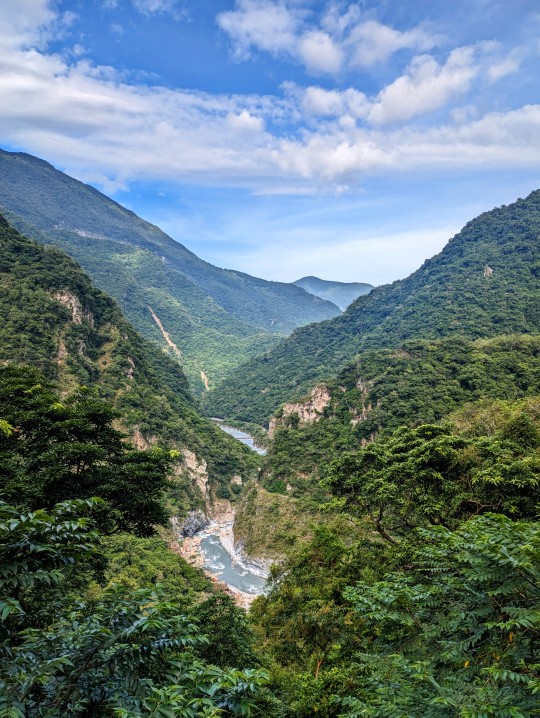

These are photos I took in Taiwan. I feel like they convey a different emotion than the ones from Ontario! I wonder what type of photos someone from Taiwan who travelled to Ontario would take, and what emotions they would try to convey.
Sources of Inspiration/references:
Beck, L., Cable, T. T., & Knudson, D. M. (2019). Interpreting Cultural and Natural Heritage. Sagamore-Venture Publishing.
Ham, S. (2013). Interpretation: Making a difference on purpose. Golden, CO: Fulcrum Publishing.
Larsen, D. (2003). Meaningful interpretation. Fort Washington, PA: Eastern National.
2 notes
·
View notes